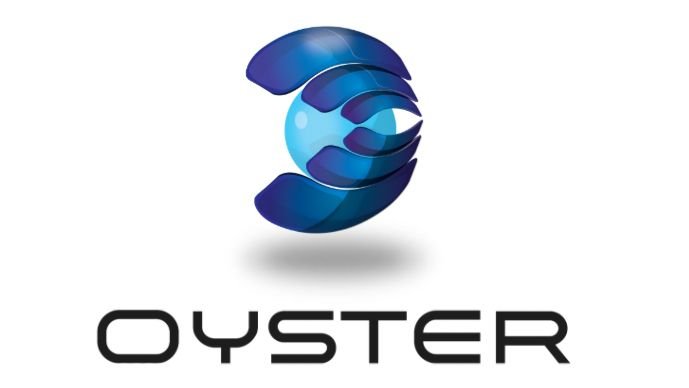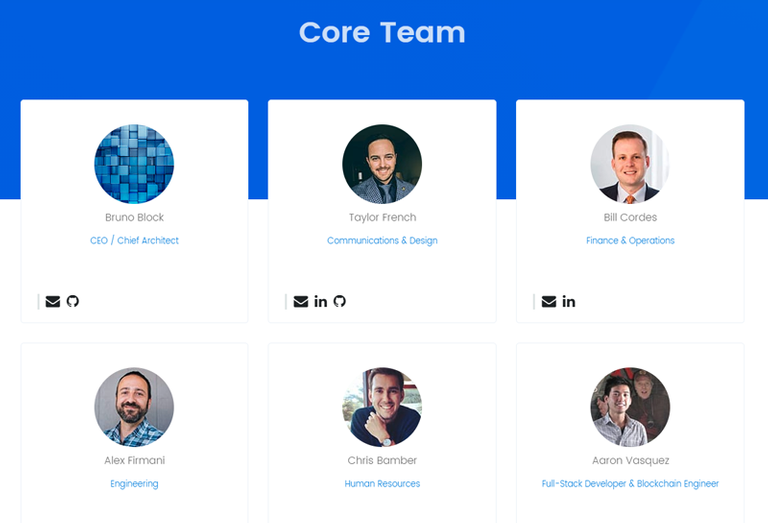
The Oyster Protocol is a system that was created in November 2017 that is aiming to find a common ground between content creators and content consumers, where creators can profit for their work without having to rely on advertising on their website. In solving this problem Oyster is also able to offer a completely decentralised cloud storage service. What Oyster is proposing is a two-birds-one-stone solution that is convenient, anonymous and totally decentralised.
The Basics of Oyster Pearl
Oyster Protocol is the whole system that links content publishers, content consumers, storage providers, and storage consumers. Oyster Pearl (PRL) is the token that is used to reward the content publishers.
Monetisation of web content means turning existing traffic into revenue, usually through advertising. However this can be intrusive for the visitor and has become ineffective due to ad-blockers for the website owner. Oyster Protocol is proposing an alternative form of traffic monetisation that utilises a small portion of the CPU of anyone visiting a website to generate revenue for said website’s owner. This small portion of CPU power will be used to continuously complete proof of work algorithms to send small packets of data through the use of IOTA’s feeless Tangle and in turn earn Pearl tokens that run on the Ethereum blockchain for the website owner. These small packets of data that are being constantly sent around the Tangle make up the users stored files and means that they can safely store data on a decentralised system.
Storage consumers will spend Oyster Pearls when they wish to upload a file, this is the baseline for Oyster Protocol as it brings PRL into the system. The PRL is embedded in the file that the storage consumer uploaded.
Content consumers/storage providers are anyone who visit a website that has Oyster Protocol enabled. Their CPU will passively do the work required to find PRL in the uploaded files of storage consumers while they are on the website, this includes performing proof of work to find PRL in encrypted data masses. These newly found Oyster Pearls are then transferred back to the website host, thus generating revenue from traffic.
Content publishers are people like website owners who wish to earn revenue through monetisation without using advertisements, they will instead use Oyster Protocol. Through adding one line of code to into their HTML, Oyster Protocol will work behind the scenes and generate additional traffic revenue. All these website owners have to supply is the content on their website to the content consumers/storage providers.
Watch the Oyster explanation video directly from their Twitter by clicking on this link:
Getting Technical
What is Proof of Work?
Proof of work is a process that is done to ensure the new block in the blockchain was time consuming and generally difficult to make. Proof of work is not done manually but rather by a computer algorithm through mining, the end goal is to conclude that a fair amount of work has been done on that piece of data to justify adding it to the blockchain. This work is so energy and time consuming that when the block is verified the miner is rewarded in their specific cryptocurrency.
For a more detailed look at what Proof of Work is check out our dedicated post.
What is IOTA’s Tangle?
IOTA Tangle is a blockless, open-source distributed ledger with no miners and therefore no fees. Everyone plays an equal role in the network and whenever a transaction is made the person who issued the transaction must verify two other transactions. This allows the network to theoretically scale well as the larger the number of users the quicker transactions can be verified. It also allows for microtransactions to take place on the network. These attributes of the network are vital for Oyster Pearl as the distributed cloud storage system relies on packets of 1kb of data to be constantly sent around the network.
What is a Broker Node?
A broker node is part of the back-end of Oyster Protocol and can be considered to be the first step in this entire process. It is a device that installs the storage consumer’s data and therefore Pearls into the data map on Tangle through proof of work. In the end only half of the pearls submitted to the website by the storage user are embedded into the Tangle, as the broker node is allowed to keep any leftover Pearls once its work has been completed. They also maintain the database of the IOTA tangle and Ethereum blockchain, kind of like a mechanic.
What is a Web Node?
A web node is the web browser of the content consumer that is visiting the website, this can be a computer, smartphone, tablet or anything with a modern web browser. These web nodes are performing the proof of work. In terms of Oyster Protocol, the web nodes perform proof of work to guarantee the retention of data in IOTA’s Tangle, and also to discover the embedded PRL and pass this PRL on to the website host, to financially compensate them. If you are concerned that this will slow down your browser then we are one step ahead of you, if your computer starts to struggle the javascript will detect this and govern the proof of work so your browser does not lag.
Roadmap
History
The initial idea of silent traffic revenue was conceived in early 2015 .
Originally the company was named FrozenJar – a centralised version of Oyster – and was developed in late 2016.
In July 2016 the IOTA Tangle was discovered and studied, and the decision to convert FrozenJar to Tangle was made.
The whitepaper for the Oyster Protocol was released in September 2017.
On October 5th 2017 the Oyster Contract, which mints the Pearl PRL token, is audited.
The PRL tokens are minted and sold in the crowdsale on October 21st 2017. Due to website owners and broker nodes being paid in PRL, the PRL tokens gain value and the Oyster Protocol is enabled.
January 2018 brings us up to date with Testnet Release A. Half of the network is enabled through protocol logic concerning Broker Node operation being released in Alpha status.
Future
In April 2018 the Mainnet is planned to be released. The addition of a Distributed Reputation system and integration with the Oyster Contract means the system will be fully functioning and ready for use.
2018 – 2019 will see the web node mesh mature which will allow decentralised javascript application to be written and implemented on the Oyster network.
Team
What once was a one man band has now developed into quite a team at Oyster. They have a total of 16 people publically working on the project, including cloud and blockchain specialists, financial advisors and marketing experts. The head of Oyster Pearl is a mysterious person known as Bruno Block. This person has chosen to remain anonymous so there is very little knowledge about them. They are however the brains behind Oyster and at one point was the only person working on it. Other notable members are Alex Firmani, the CTO who previously worked for Amazon, and Aaron Vasquez who has worked on software development projects for Google and Uber.

Trading Information
The Oyster Pearl ICO created a hard cap of 500,000,000 tokens with a total of 108,692,692 minted at the time. Of these there is a circulating supply of 62,366,927. Shortly after the ICO had finished the PRL price shot up and peaked on January 7th 2018 at a price of $4.48. Since then the Oyster Pearl price has slowly been decreasing, probably due to the annual mid January slump and the fact that IOTA has been having troubles in early 2018.
How to Buy Oyster Pearl
Currently Oyster Pearl is available on the following exchanges:
As all of these exchanges are cryptocurrency only exchanges, we’d recommend using Coinbase or Coinmama to buy Bitcoin or Ethereum to be able to buy the PRL tokens.
Read More: Coinbase Review – Is Coinbase Safe?
How to Store Oyster Pearl
Our recommended Oyster Pearl wallet would be MyEtherWallet. As the PRL tokens are an Ethereum based ERC20 token they can be stored on any ERC20 compatible wallet.
It is also possible to store your Pearl tokens on a hardware wallet such as the Ledger Nano S or the Trezor, just make sure they are compatible with ERC20 tokens.
Competition
The competition that Oyster face is pretty tough. On the advertising side of things there are coins such as Basic Attention Token (BAT) and on the cloud storage side of things there are Siacoin (SC) and Storj (STORJ) amongst others. All of these are solid coins in themselves but Oyster’s unique selling point is that it solves both problems with one solution. If they manage to successfully implement it and it gains some attention then it could be very successful.
Our Opinion on Oyster Pearl
We like Oyster Pearl a lot here at Cryptos Decoded. We think it has a lot of potential and like that the system is very close to being functional. The team being openly communicative is a good sign and they are willing to discuss the good and bad parts of Oyster Pearl constructively. There are a few things to worry about, such as the IOTA dependence but overall we think it should be good for the long term.
Pros and Cons
Pros
Great concept with an elegant solution to two problems.
A good team of highly skilled engineers and developers.
Incredibly user friendly – By only having to add in one line of code to a website makes it much more accessible than the competition. There isn’t a need for a different browser (like BAT requires) or any complicated coding.
Cons
The line of code is still susceptible to being blocked by ad blockers.
Depends on the success of IOTA. If IOTA fails it has been said that Oyster will fork the IOTA software and create their own Tangle to run the network.
Can’t change your files after they have been uploaded.
Final Thoughts
Overall, we think the concept that has been developed is incredibly interesting and we love that Oyster Pearl manages to solve two problems with a single solution. The current team is also a very strong point and the willingness of communication is great. Despite some heavy competition and a few potential stumbling block we believe that Oyster Pearl will still be successful.
However, we are not, and do not claim to be, financial advisors and are simply amature crypto enthusiasts, so feel free to take our opinion with a grain of salt.
interesting
I Upvoted and Followed You. do The same for me And we can Help Each other Earn